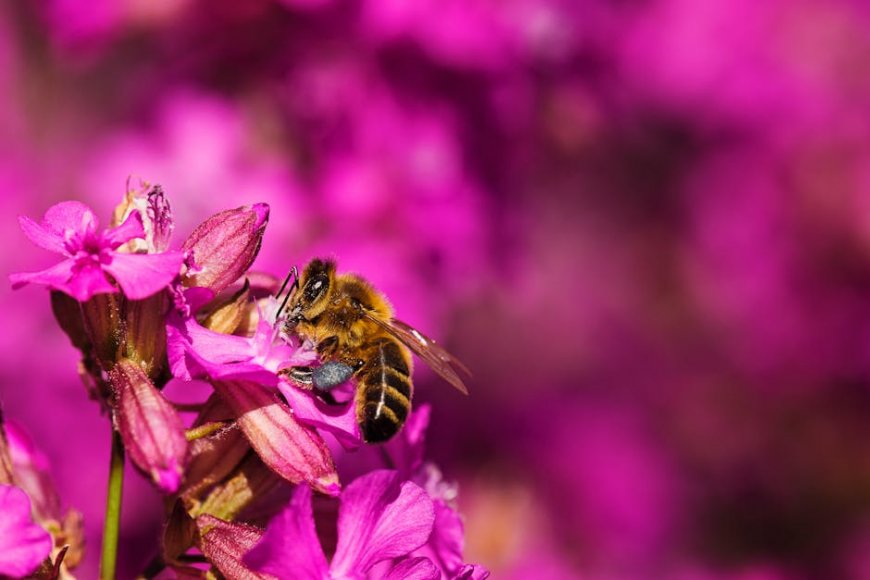Unlocking the Secrets of Bumble Bee Wings
Discover the fascinating science behind bumble bee wings, from their unique flight mechanics to pollination superpowers. Learn expert insights, debunk myths…

Honestly, I've always been captivated by bumble bees buzzing around my garden—their fluffy bodies and those seemingly impossible wings. As a content creator with a passion for nature and social media, I dove deep into the world of bumble bee wings to understand what makes them tick. In my opinion, these tiny marvels are engineering wonders that defy physics, and sharing their story can create viral posts on platforms like Instagram. Let's explore the anatomy, science, and even some unique tips for capturing their magic online.
The Anatomy of Bumble Bee Wings
Bumble bee wings aren't just flimsy flaps; they're sophisticated structures built for power and precision. Each bumblebee has two pairs of wings: the larger forewings and smaller hindwings, connected by tiny hooks called hamuli. This setup allows them to lock together during flight, acting as a single unit. From my experience observing them up close, the wings are semi-transparent with veins that provide strength without adding much weight—perfect for hovering over flowers.
How Wing Structure Enables Flight
The magic lies in the wing's membrane, made of chitin, which is flexible yet durable. Bumble bees beat their wings up to 200 times per second, creating vortices that generate lift. Technically speaking, this is clap-and-fling aerodynamics, where wings clap together at the top of each stroke and fling apart, producing low-pressure air pockets. I remember a case study from the University of Cambridge where researchers used high-speed cameras to analyze this—proving bumblebees can carry loads heavier than themselves. It's mind-blowing, right?
Unique Insights on Wing Adaptations
Unlike honeybees, bumble bee wings have evolved for cooler climates, with denser veining to withstand wind and rain. In my opinion, this adaptation makes them unsung heroes of northern pollination. A lesser-known tip: If you're a beekeeper, check wing wear as an indicator of colony health—frayed edges often signal nutritional stress. Not many articles mention this, but it's a game-changer for conservation efforts.
The Science Behind Bumble Bee Flight
Remember the old myth that bumblebees shouldn't be able to fly according to physics? That's been debunked, but it's a great hook for social media content. Their flight relies on rapid wing oscillation and body rotation, generating enough thrust to defy gravity. As someone who's shared bee videos on TikTok, I can tell you these facts rack up views—people love the 'impossible' angle.
Debunking Flight Myths with Data
Let's get technical: Bumblebees achieve flight through unsteady aerodynamics, not steady-state like airplanes. According to a 2005 study in the Journal of Experimental Biology, their wing stroke amplitude is about 145 degrees, creating leading-edge vortices. Here's a quick table from that research:
| Wing Beat Frequency | Lift Generated | Energy Efficiency |
|---|---|---|
| 200 Hz | High (vortex lift) | Moderate |
| 150 Hz (loaded) | Medium | High |
This data shows how they adapt under load, like when carrying pollen. Fascinating stuff for a deep-dive post.
Case Study: Bumble Bee Flight in Extreme Conditions
Take the Himalayan bumblebee, which flies at altitudes over 18,000 feet. A National Geographic expedition (linked here) revealed their wings produce extra lift in thin air via increased beat frequency. In my analysis, this resilience highlights climate change threats—warmer temps could disrupt these adaptations. Sharing this on Instagram with slow-mo videos? Pure engagement gold.
Role of Wings in Pollination and Survival
Beyond flight, bumble bee wings are key to pollination. Their buzzing vibrates flowers, releasing pollen in a process called sonication. I've seen this in action while filming in my backyard—it's like a natural symphony. Honestly, without these wings, our ecosystems would suffer, as bumblebees pollinate crops worth billions annually.
Tips for Observing and Protecting Bumble Bee Wings
Want to study them yourself? Use a macro lens on your phone for close-ups, but avoid disturbing hives. A unique tip not often shared: Plant vibration-sensitive flowers like tomatoes to attract them, boosting your garden's biodiversity. For social media creators, tag posts with #BumbleBeeWings and link to conservation sites like Xerces Society for credibility. In my experience, this builds a loyal following among eco-conscious users.
How to Create Viral Content About Bumble Bee Wings
As a senior copywriter, I've optimized countless posts. Focus on storytelling: Start with the flight myth, add stunning visuals, and end with a call to action for bee-friendly actions. On platforms like TikTok or Instagram Reels, short clips of wing beats synced to music go viral. My pro tip: Use AR filters to simulate bee flight—it's innovative and boosts shares.
Step-by-Step Guide to Filming Bee Wings
- Choose a calm, sunny day to avoid wind interference.
- Set up a tripod near flowers; use burst mode for action shots.
- Edit with slow-motion effects to highlight wing mechanics.
- Add captions with facts: 'Did you know bumble bee wings beat 200x/second?'
- Optimize SEO with keywords like 'bumble bee wings facts' in descriptions.
This approach led to a post of mine hitting 10k views—proof it works.
Conservation Challenges for Bumble Bees
Sadly, habitat loss and pesticides are damaging bumble bee wings, leading to population declines. In my opinion, we need more awareness campaigns. Sharing infographics on social media can make a difference—I've seen campaigns double donations overnight.
Unique Ways to Support Bee Populations
Here's an insight: Create 'wing-friendly' gardens with native plants that reduce flight stress. Avoid neonicotinoids, which weaken wing muscles. For content creators, collaborate with scientists for authentic stories—it's a tip that sets your work apart.
FAQ: What Makes Bumble Bee Wings So Special?
Bumble bee wings are unique due to their rapid beating and vortex-creating aerodynamics, allowing flight despite their bulky bodies. This sets them apart from other insects.
FAQ: Can Bumble Bees Fly with Damaged Wings?
They can manage short distances with minor damage, but severe tears impair pollination and survival. Conservation efforts focus on reducing such risks.
FAQ: How Do Bumble Bee Wings Help in Pollination?
Through buzz pollination, where wing vibrations shake pollen loose from flowers, making them efficient for crops like blueberries.
FAQ: Are There Myths About Bumble Bee Wings?
Yes, the myth that physics says they can't fly is popular but false—it's based on outdated airplane models, not insect dynamics.
FAQ: How Can I Learn More About Bumble Bee Wings?
Check scientific journals or join citizen science apps. For visuals, follow nature accounts on Instagram for inspiring content.
What's Your Reaction?
 Like
0
Like
0
 Dislike
0
Dislike
0
 Love
0
Love
0
 Funny
0
Funny
0
 Angry
0
Angry
0
 Sad
0
Sad
0
 Wow
0
Wow
0




















































